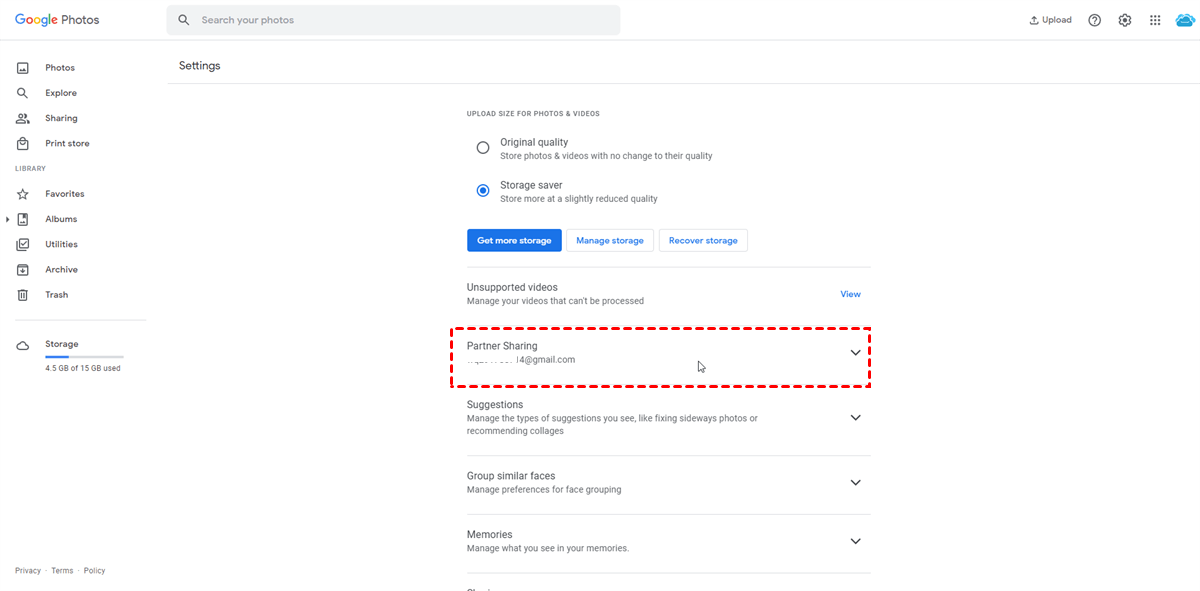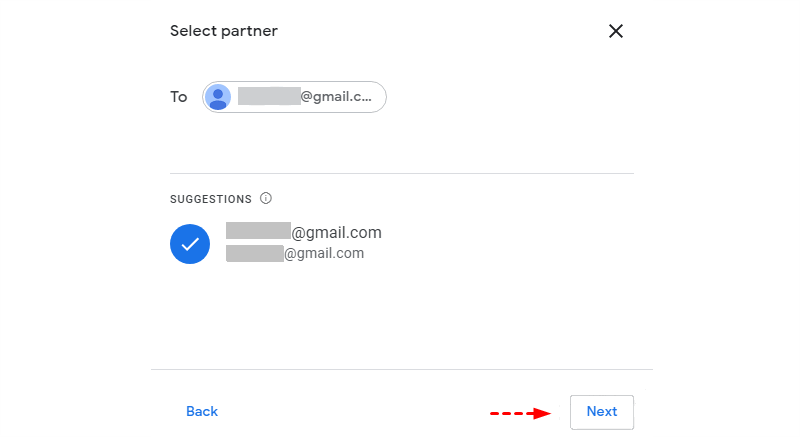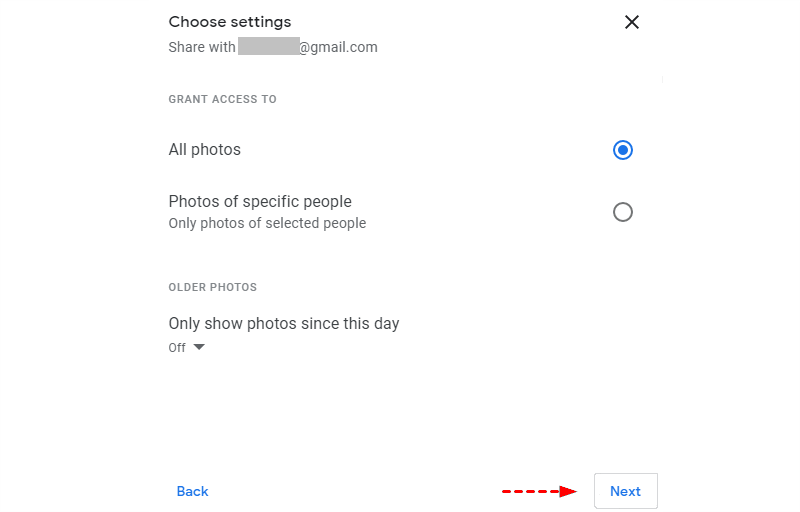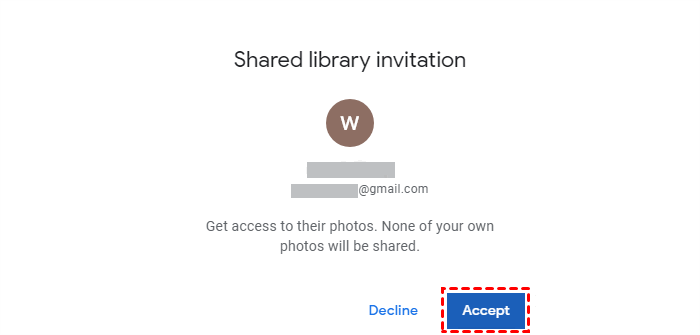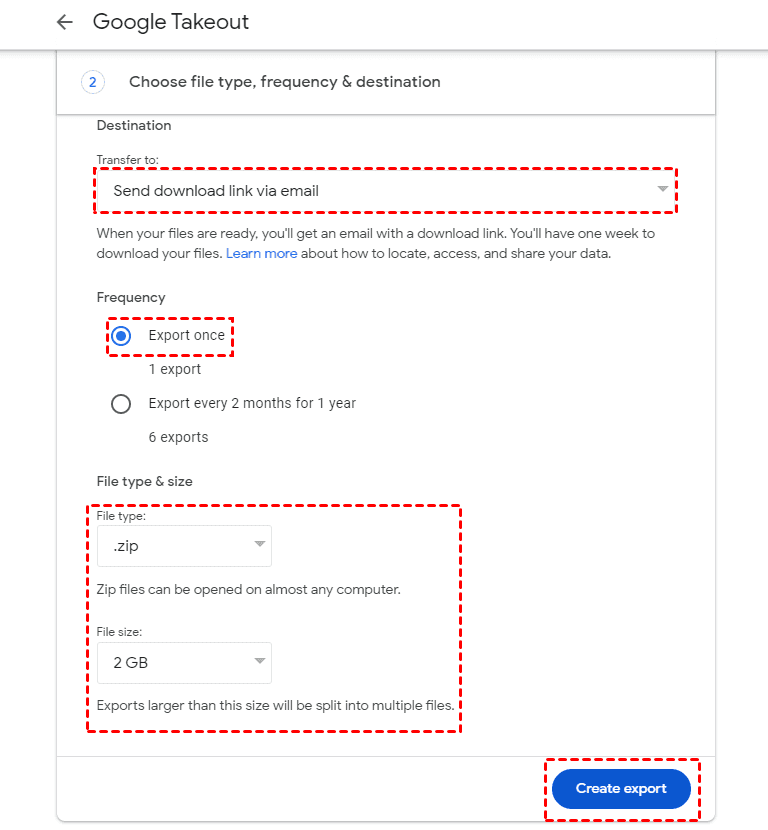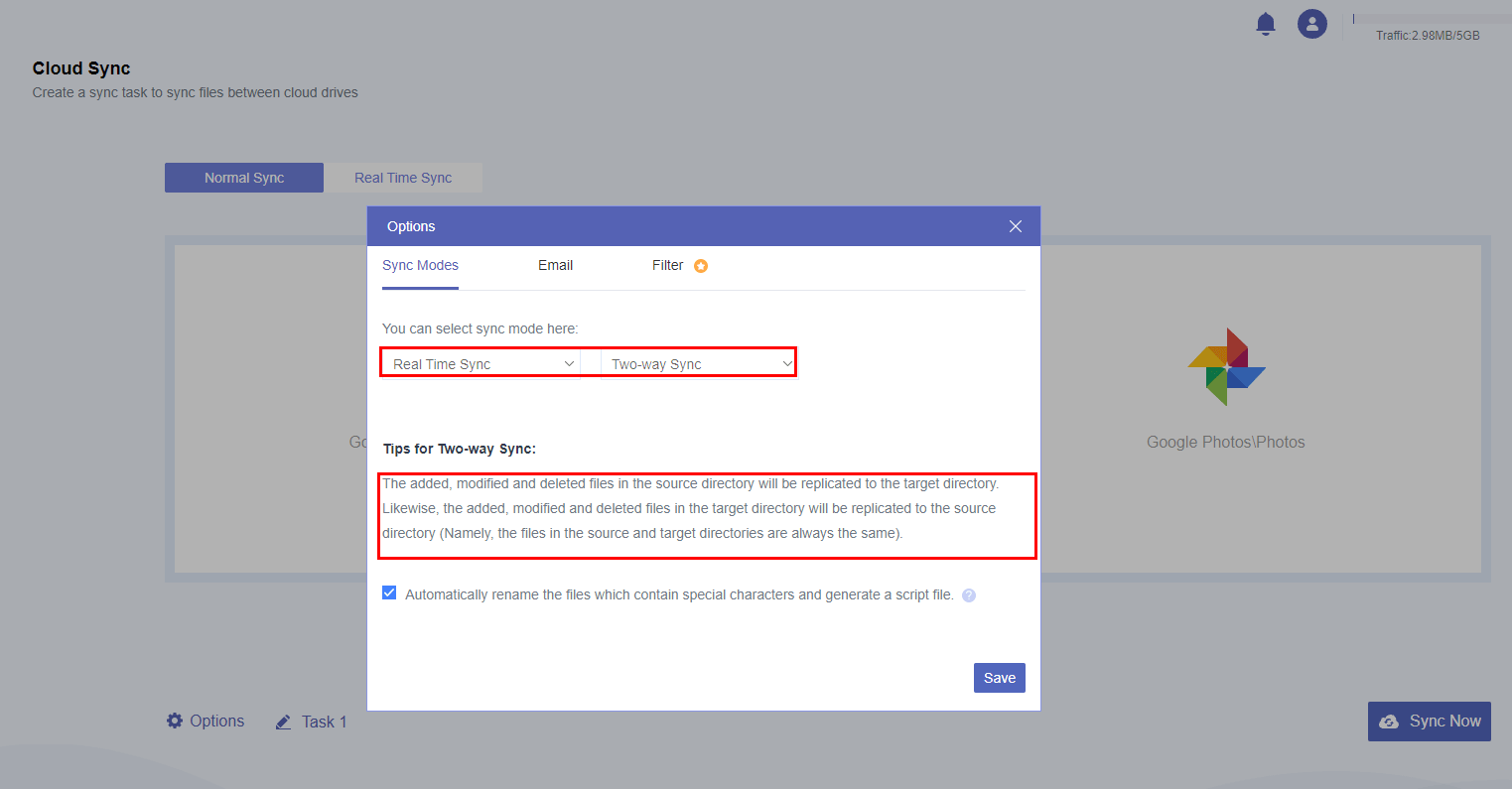Content at a glance:
User Case: How to Move Photos to Another Google Account?
I am trying to move all of my uploaded Google Photos images from one account to another. I am currently in college and have used my college (.EDU) account to backup my photos. However, once I graduate that email address will be closed and I will lose access to these photos. How do I transfer every photo to my personal Gmail account?
- Question from https://support.google.com/
Why Transfer Photos from One Google Account to Another?
Nowadays, people prefer to store data in cloud storage because they can access their data anywhere and anytime. In this way, using cloud drives has become increasingly popular. Google Photos is an excellent photo-sharing and storage service developed by Google. In the past, as long as you set the storage settings to "High quality", you could get unlimited photo storage for photos up to 1080p resolution. However, Google Photos ended the unlimited cloud storage for photos and videos on June 1, 2021.
Besides, to pursue the original resolution and quality of photos and videos, you might choose "Original quality" to store the photos, and this will use storage quantity in your Google account quickly. As more original photos are stored, you may prefer to recreate a new account to enjoy more free storage space. However, how to move Google Photos from one account to another confuses you a lot. Luckily, today we bring 6 reliable methods to help realize the photo migration between two different Google Photo accounts.
3 Advanced Ways: Transfer Photos from One Google Account to Another
How to move Google Photos to another account effectively. First of all, we will show you the 3 quick ways to backup Google Photos to another account and you have to take advantage of MultCloud.
- MultCloud is a FREE web-based multiple cloud storage manager that allows you to transfer files between cloud drives like Google Drive, OneDrive, MEGA, Box, iCloud Drive, iCloud Photos, pCloud, WebDav, FTP server, etc without downloading and uploading, logging in and out, or switching accounts so you can easily migrate your photos from one Google Photos to another account.
- It allows you to migrate all photos from one Google account to another with Filter at once, saving time and effort.
- Perform automatic data migration between Google Photos accounts, or Google Drive accounts, etc. with Schedule.
- MultCloud supports cloud-to-cloud data transmission even if the device is turned off.
Let's see how to move photos from one Google account to another with easy steps.
You could choose one of the following three methods that are more suitable for your situation to operate.
Way 1. Transfer Google Photos to Another Google Account with "Cloud Transfer"
Can I transfer all my Google Photos to another account? If you do so, you can directly use the "Cloud Transfer" to perform the Google Photos migration.
How to Move Photos from One Google Account to Another in 3 Steps
1. Sign up before using MultCloud, or log in directly with your Google+ or Facebook account.
2. Then click on "Add Cloud" and add your two Google Photos accounts to MultCloud one by one.
3. Click on the "Cloud Transfer" button on the left tab. Select one Google Photos as the source and another Google Photos as the destination.
Tips:
- If you would like to free up space for Google Photos after migration if you hit the Google Drive storage limit, you can hit Options > Delete all source files after transfer is complete to enable it, this is also how to transfer photos from one Google account to another permanently. Besides, you can enable Email and Filter to make it efficient.
- Furthermore, scheduling cloud transfer is also available in Schedule, so you can automatically transfer between cloud storage services at regular intervals.
- You can enjoy all advanced features, including Schedule, Filter, and up to 10 threads to transfer, after subscribing.
4. Finally, click on "Transfer Now" to transfer Google Photos to another account directly.
Notes:
- The "Cloud Transfer" feature is more suitable for transferring folders or the whole storage to other clouds, or you want to free up space for Google Photos.
- You are not allowed to transfer the corresponding folders to the root directory of your destination Google Photos account. While selecting the target path, you may need to select a subdirectory under your target Google Photos account as the destination.
Way 2. Copy Photos from One Google Photos to Another with the "Copy to" Function
If you want to copy several photos, videos, or folders to another Google Photos, you can achieve the demand with the "Copy to" function.
3 Simple Steps to Copy Google Photos from One Account to Another
1. Please ensure you have added both Google Photos accounts to MultCloud. Then tap your first Google Photos.
2. Select the photos you want to move and right-click "Copy to".
3. Choose a folder under another Google Photos account as the destination in the pop-out window. Then click on "OK" to copy Google Photos to another account.
Notes:
- The "Albums" directory can only store album directories, but not media files. So, you can choose "Photos" as your target directory to save your images, photos, videos, and other media files.
- Here, you can tick Multi-select to move Google Photos to multiple locations to keep them safe according to 3-2-1 backup strategies.
Way 3. Move Google Photos to Another Account with "Share"
This method is suitable for you to transfer cloud drive data to one of your family members. If you also have this need, then the "Share" function in MultCloud can help you.
Google Photos Share with Another Account with Password Protected
1. Open Google Photos on MultCloud, select and right-click the file or folder, and finally select "Share" > "Share with MultCloud" in the pop-up window.
2. Select the sharing mode, choose Private Share, and hit Create Share.
Tips:
- In view of the privacy of the file, you can choose "Private Share". This kind of sharing can create a password, and only those who know the password can obtain the file data, which can ensure the security of the data.
- If you choose Public Share, you can make your Google Drive folder public to everyone as long as they get the link.
3. Hit Copy to get the link and password. Then send the link and password to your family member.
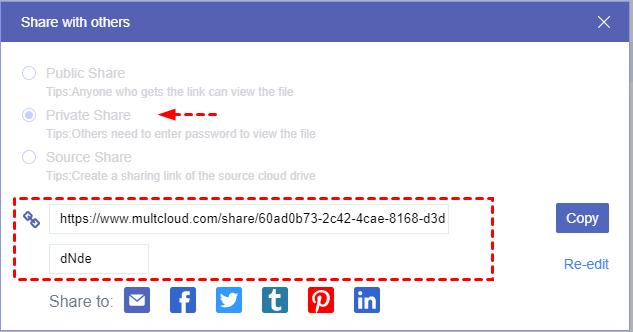
4. They can open the link and enter the password to get the content you share. Then hit Save to Cloud > Google Photos to share all Google Photos with another account.
Notes:
- If your family member does not register a MultCloud account, they only can download the data directly to the computer, and then upload it to their Google Photos account.
- If they want to save files directly to Google Photos, they need to register a MultCloud account first, so that it is very convenient to share useful e-books or application installation packages among multiple different cloud drives.

- Smart Share: Share cloud files via public, private, or source mode.
- One-key Move: Quick data transfer, sync, and backup among clouds.
- Email Archive: Protect emails to other clouds or local disks.
- Remote upload: Effectively save web files to clouds via URL.
- Safe: Full-time 256-bit AES and OAuth authorization protections.
- Easy: Access and manage all clouds in one place with one login.
- Extensive: 30+ clouds and on-premise services are supported.
4 Common Ways: Transfer Photos from One Google Account to Another
Here, we will show you 4 traditional ways used by most people to transfer Google Photos from one account to another.
Way 1. Download and Upload to Send Google Photos to Another Account
Step 1. Log in to your first Google Photos account.
Step 2. Select the photos that you want to transfer.
Step 3. Click the "Download" icon located at the top right corner.
Note: These photos will be downloaded as a zip file. If you want to upload them separately to another account, remember to extract them before uploading.
Step 4. Log in to your second Google Photos account.
Step 5. Click on the "Upload" icon or directly drag all the downloaded images into the second account to upload them.
Limitations:
- This way can help move photos from one Google Photos to another, but the downloading and uploading are really bothering and time-consuming.
- Besides, the whole process will be affected by the network speed and the volume of your photos.
Way 2. Transfer Google Photos to Another Account with the "Sharing" Feature
Yes, you can transfer these photos by creating a sharing link. There are detailed steps.
Step 1. Browse photos.google.com in the source Google account.
Step 2. Select the photos you want to transfer.
Step 3. Click the "Share" icon located in the top right corner of the display and choose and select the "Create Link" option.
Step 4. Copy the link in the pup-out window and paste it into a new tab.
Note: You can also copy this link and share the photo link with others on any other media.
Step 5. Log in to your second account and click on the "Add to Album" button to add them to your second Google Photos account. Then you can view all the shared photos in the "Photos" interface. This is how to transfer Google Photos from one account to another via the built-in Share feature.
Limitation: You have to repeat the process to share multiple Google Photos to another account manually.
Way 3. Send a Partner Sharing Invitation
Step 1. Move to the "Settings" interface of your first Google Photos account.
Step 2. Click on the "Partner Sharing" selection.
Tip: If the Partner Sharing in Google Photos not showing, click to get solutions to fix it.
Step 3. Enter the address of your second Google Photos account and click on the "Next" button to continue.
Step 4. Choose settings in the pop-out window and click on the "Next" icon.
Note: In this step, you could choose to share all the photos or just part of them with another account.
Step 5. Click on the "Send Invitation" button in the window.
Step 6. Login to your second Google Photos account.
Step 7. Move to the "Sharing" interface and accept the invitation. In this way, you can view all shared photos from your first account.
Step 8. Open up the shared library, select all the photos, and click on "Add to library" to transfer them to your account.
Limitation: Way 2 and Way 3 can help you transfer Google Photos to another account without downloading and uploading, but when you log in to your two accounts at the same time, the Google browser might not figure out which account you are using when operating, thus the operation may be a bit of troublesome.
Way 4. Transfer Google Photos to Another Account via Google Takeout
Some users report Google Takeout can help you to move photos from one Google account to another, but it's complicated to process the migration. You have to export Google Photos from the source account, then upload them to another Google Photos account. Here is how it works:
1. Go to the Google Takeout website and log in to your source Google Photos account.
2. Click Deselect all to select nothing, then choose Google Photos only, and scroll down to hit Next step.
Tip: It will select all photos in your Google Photos by default, or you can hit All photo albums included to specify which photos to migrate.
3. Select Send download link via email in the Destination field, then customize the export frequency, file size & type, and hit Create Export.
4. Wait for the process to complete. Then check your email for the export, hit Download your files, and follow the guide to download Google Photos to your computer.
Tip: It will be a zip file, please uncompress it for uploading.
6. Go to the target Google Photos account, and tap + > Import photos.
7. Choose the downloaded Google Photos and hit Open to move Google Photos to another account manually.
Limitations:
- Although Google Photos say it will migrate metadata (like description, title, comments, etc.) sometimes it may not.
- Besides, it takes up few days to complete especially there is a large number of photos to migrate, and it will cut them into dozens of zip file, even hundreds, it's not easy to operate and upload.
- Some videos might not be played due to unknown reasons.
Further Reading: How do I Merge Two Google Photos Accounts?
Above is how to transfer Google Photos from one account to another via 6 different methods. Given that most users ask whether they can merge Google Photos from two accounts, here we will talk about this issue. Sorry to tell you that you can't "merge" two accounts directly. Luckily, the MultCloud provides a workaround.
Its "Sync" feature allows you to sync data between different clouds or two accounts of one cloud, along with 8 different custom options. The "Incremental Sync" will only transfer files that have been changed or newly added. The "Two-way Sync" and "Real-time Sync" means that added, modified, and deleted files in the source directory will be automatically replicated to the target directory. Likewise, the added, modified, and deleted files in the target directory will be replicated in the source directory. Thus, the files in the source and target directories are always the same.
| ?Download and Upload to transfer photos | Go to your first Google Photos account, select photos to download, and uncompress them; Then head to your second Google Photos account, and tap UPload > Computer to select all downloaded Google Photos to upload. |
| ?Share Google Photos with another | Log in to your first Google Photos account, then select photos and hit Share, hit Create Link > Create Link, then hit Copy to generate a link. Then log in to another Google Photos account, paste the link in the browser, then click Join to transfer Google Photos to another account. |
| ?Send a shared library invitation | Please go to Settings of your first Google Photos account, click Partner Sharing, enter your second Google Photos email, choose sharing settings, and hit Send Invitation. Go to your second Google Photos account, accept the invitation under Sharing, then add all photos to the library. |
| ⬇️Google Takeout photos and upload to another account | Use Google Takeout to export photos from the source Google Photos account, then upload them to another Google Photos account manually. |
| ?Copy photos to another Google Photos | Add both your Google Photos accounts to MultCloud, select photos in your first Google Photos, choose "Copy to", and select another Google Photos as the destination to save. |
| ☁Cloud transfer Google Photos to another | Add your two Google Photos accounts to MultCloud, then use Cloud Transfer to select your first Google Photos as the source, and another Google Photos as the destination, click Transfer Now to migrate Google Photos to another account. |
| ?Private Share | Go to your first Google Photos account after adding both your Google Photos to MultCloud, select photos and Share, choose Private Share, and copy the link. Send the link to the person you'd like to share, and Save them directly to another Google Photos account. |
Summary
After reading this post, you should know how to transfer photos from one Google account to another. Obviously, MultCloud provides the easiest way. The same methods also work for moving Google Photos to One Drive, Dropbox, Flicker, and so on. Except for transferring Google Photos to another account, you can also transfer all Google Drive files to another account, and manage all cloud files in one place, etc.
MultCloud Supports Clouds
-
Google Drive
-
Google Workspace
-
OneDrive
-
OneDrive for Business
-
SharePoint
-
Dropbox
-
Dropbox Business
-
MEGA
-
Google Photos
-
iCloud Photos
-
FTP
-
box
-
box for Business
-
pCloud
-
Baidu
-
Flickr
-
HiDrive
-
Yandex
-
NAS
-
WebDAV
-
MediaFire
-
iCloud Drive
-
WEB.DE
-
Evernote
-
Amazon S3
-
Wasabi
-
ownCloud
-
MySQL
-
Egnyte
-
Putio
-
ADrive
-
SugarSync
-
Backblaze
-
CloudMe
-
MyDrive
-
Cubby
.png)

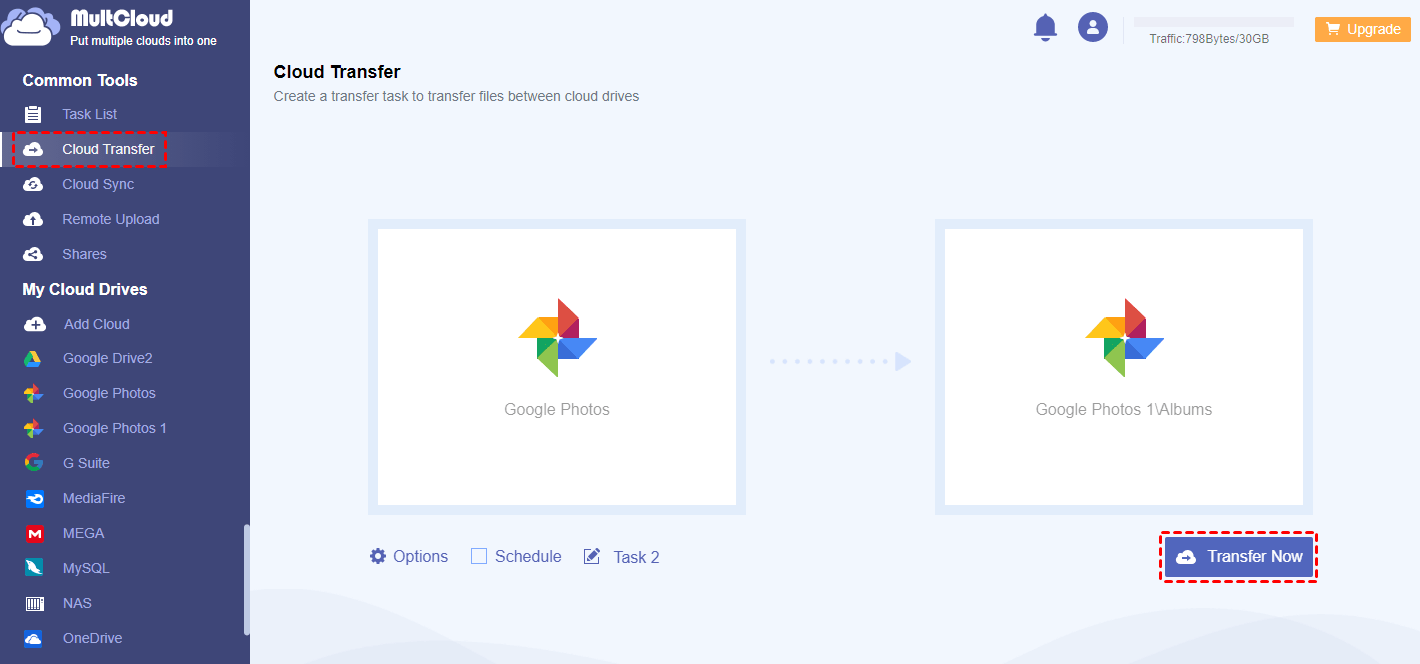
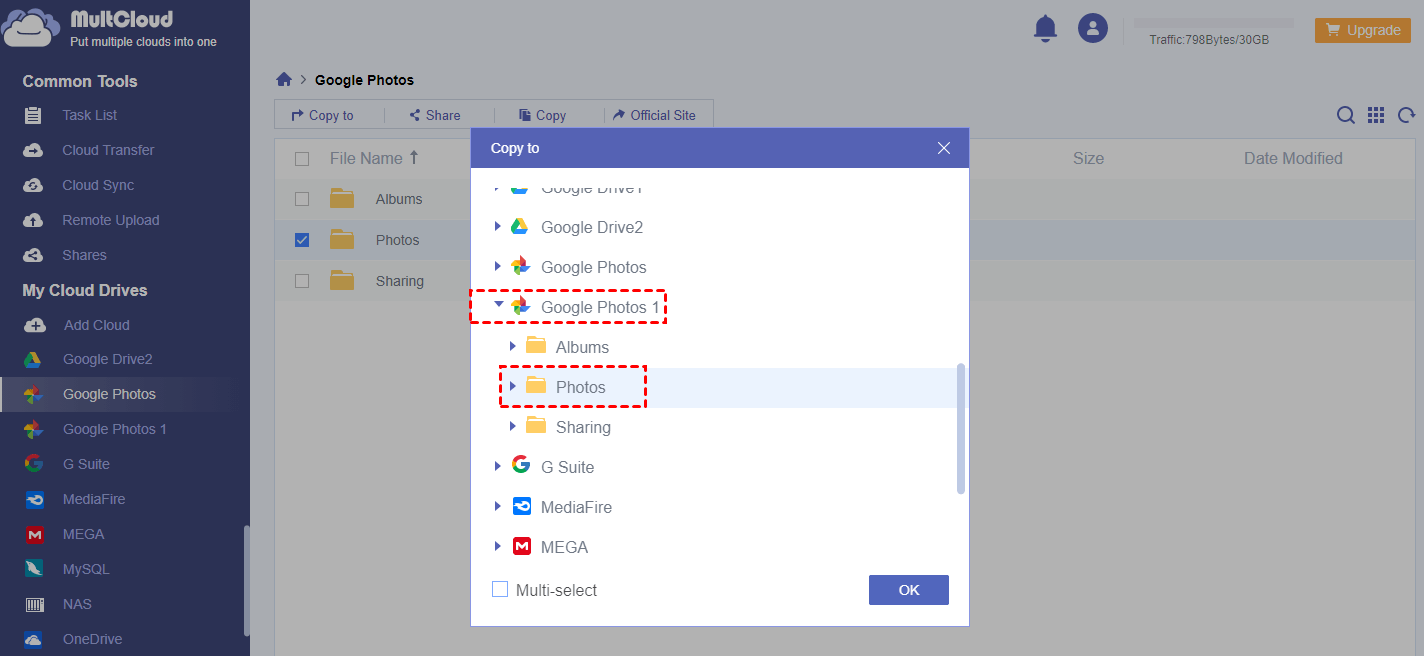
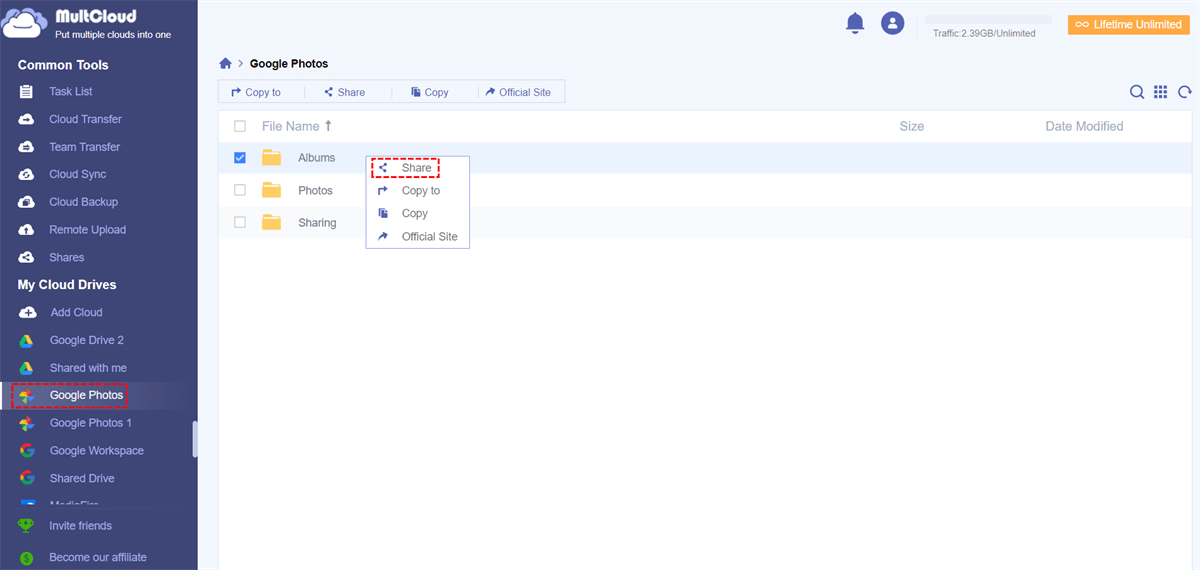
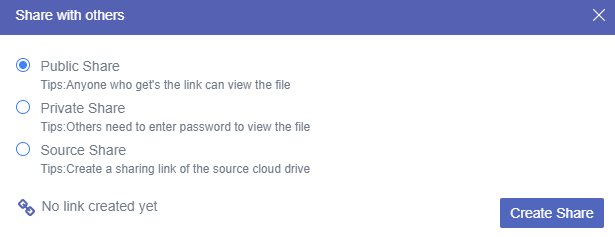


.png)

